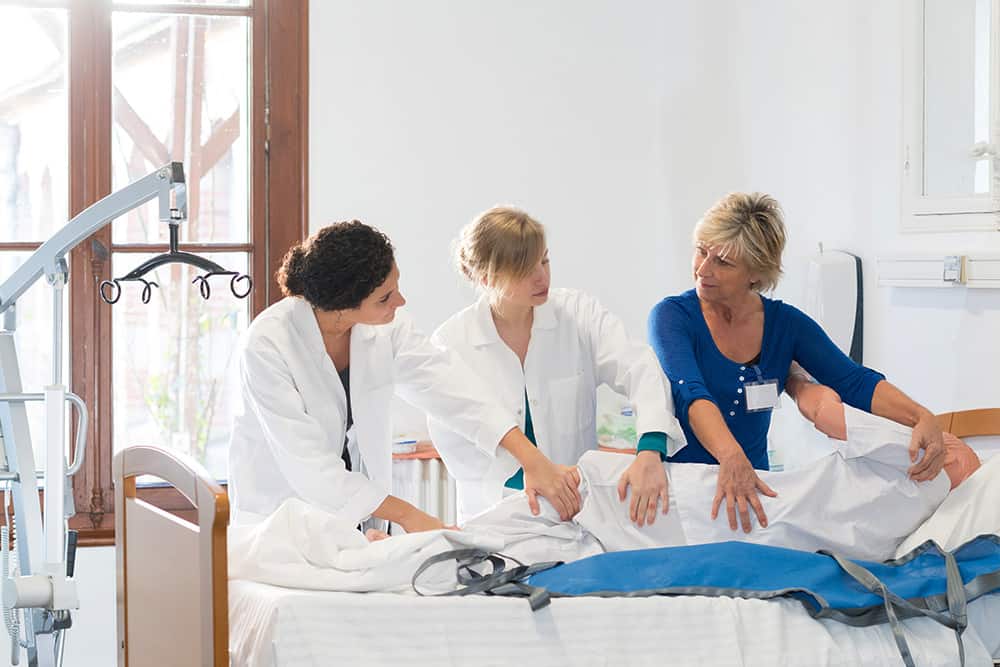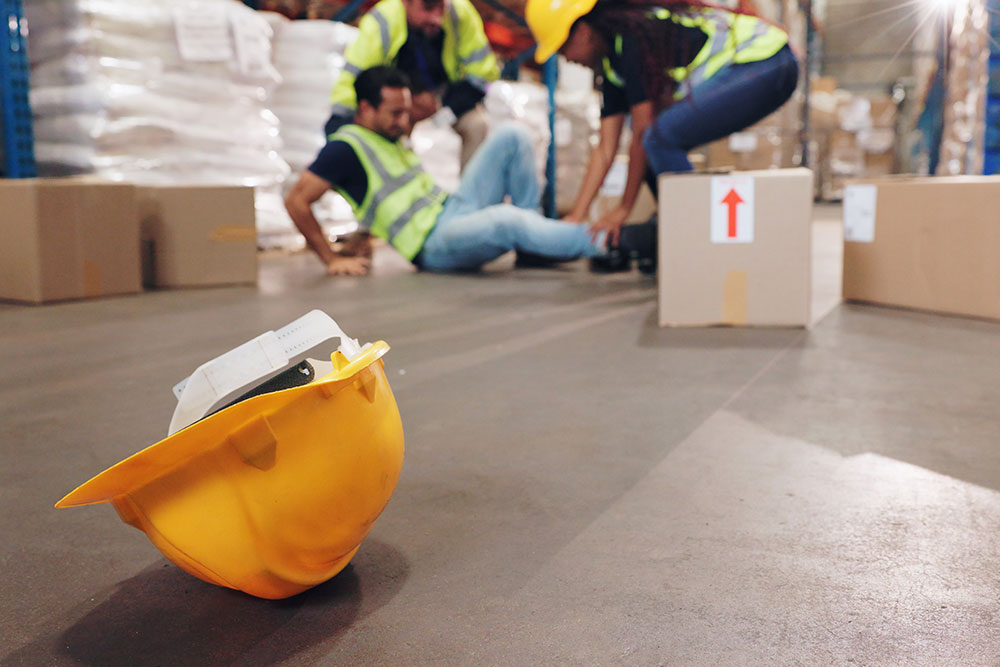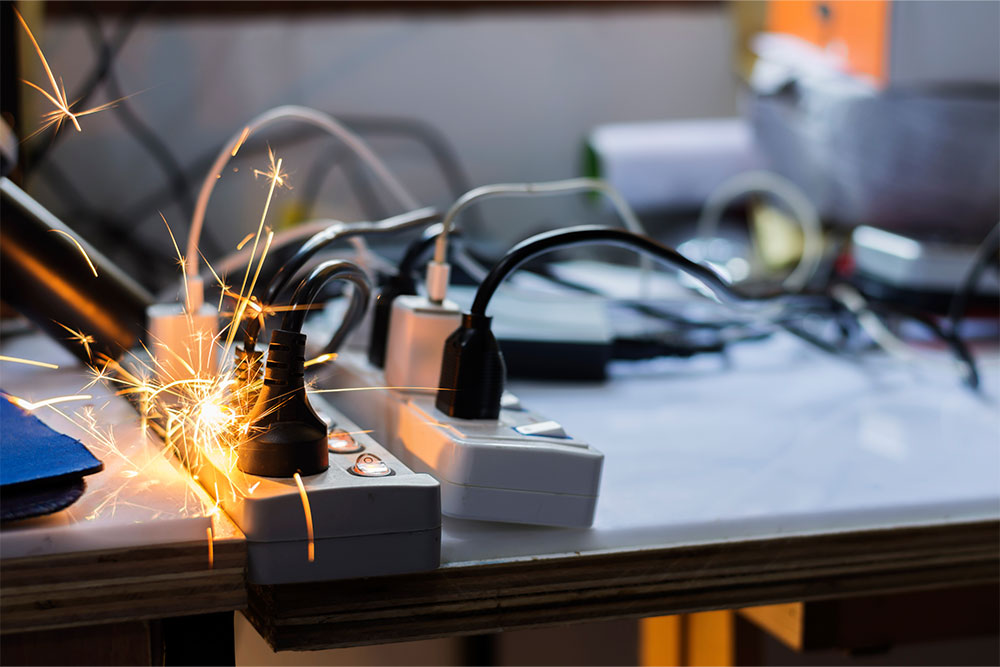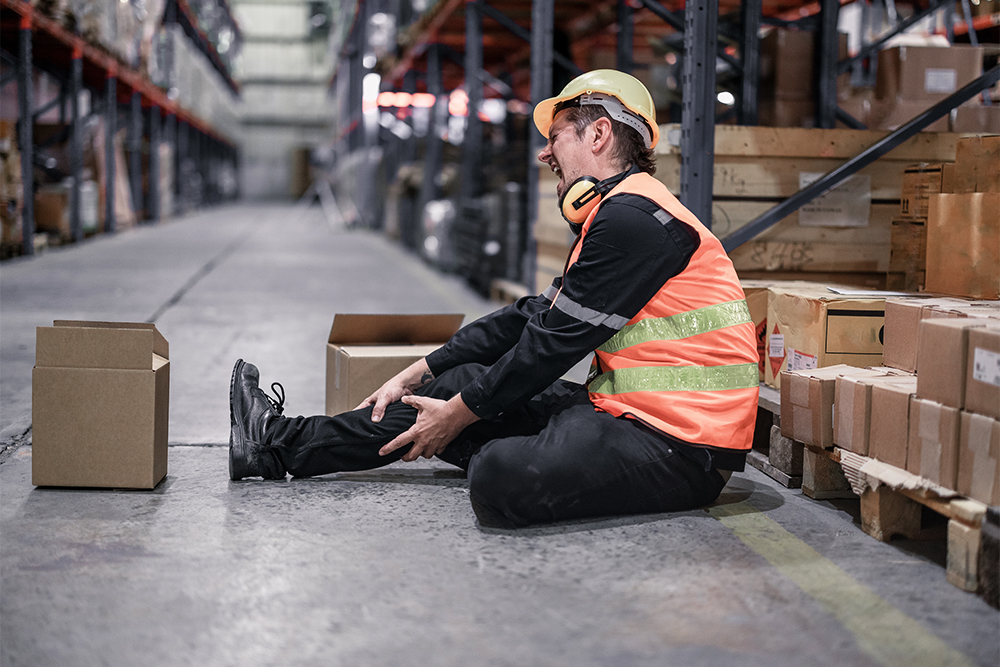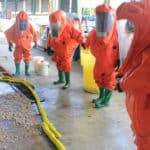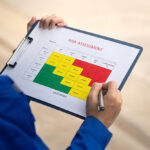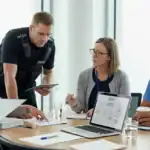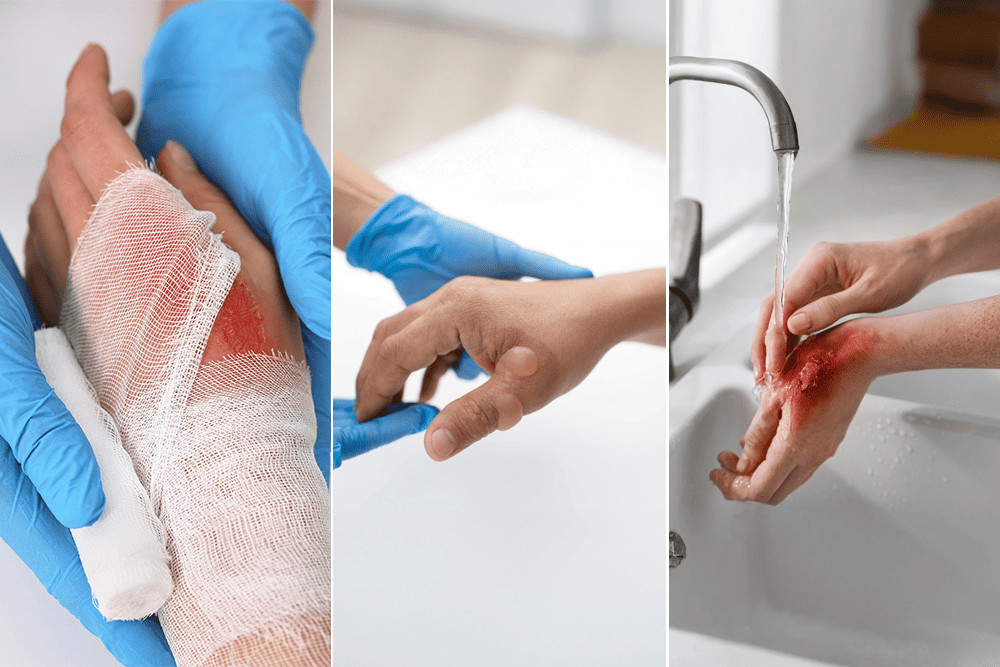
Knowing how to treat a burn correctly is important. Whether you’re cooking in the kitchen or working with an electrical system, burns can happen to anyone.
In this blog, we’ll guide you through the different types of burns, what you need to do immediately to treat them and when to seek professional medical care.
Key Takeaways
- Burns can be caused by heat, electricity, chemicals or radiation.
- Burns are classified into three types – first, second and third degree – based on the depth of the injury and the extent of damage to the skin.
- For first and second degree burns, flush the burn with cool (not icy) running water for 10-15 minutes.
- Never apply water to a burn that appears charred, white or black.
- For all burns, cover the affected area loosely with a dry, sterile bandage.
- Seek medical help immediately if the burn covers a sensitive or large area, appears charred, white or black or if the person is having difficulty breathing.
- Take over-the-counter pain relievers like ibuprofen to reduce pain.
Types of Burns
Burns can be caused by heat, chemicals, electricity or radiation. There are three types of burns based on the severity of the injury and the extent of skin damage.
1. Superficial or First-Degree Burns
Superficial burns only affect the epidermis, which is the outermost layer of the skin. They cause redness, mild pain and some swelling but generally heal within a week without causing permanent damage or scarring.
Common causes include sunburn or brief contact with hot surfaces or liquids.
2. Partial Thickness or Second-Degree Burns
Partial thickness burns extend deeper, affecting both the epidermis and the skin layer underneath (the dermis). These burns lead to intense pain, swelling and blisters but generally heal over two to three weeks. Some may leave scars, though.
Partial thickness burns are typically the result of prolonged contact with hot objects or liquids. Brief exposure to corrosive chemicals or electricity is also a possible cause.
3. Full Thickness or Third-Degree Burns
Full thickness burns damage all skin layers plus deeper tissues like muscles, tendons or bones. These burns can appear blackened or white and may not immediately feel painful due to nerve damage.
These burns are caused by exposure to intense heat, high-voltage electricity or extremely corrosive chemicals.
Basic First Aid Training
Our First Aid at Work Course provides a thorough understanding of a practical approach, in case of a medical emergency, without putting oneself in a dangerous situation. It explores the key concepts of first aid at work to help save lives and ensure compliance.
Treatment
First-Degree Burns
First-degree burns affect only the skin surface, so don’t usually require professional medical care.
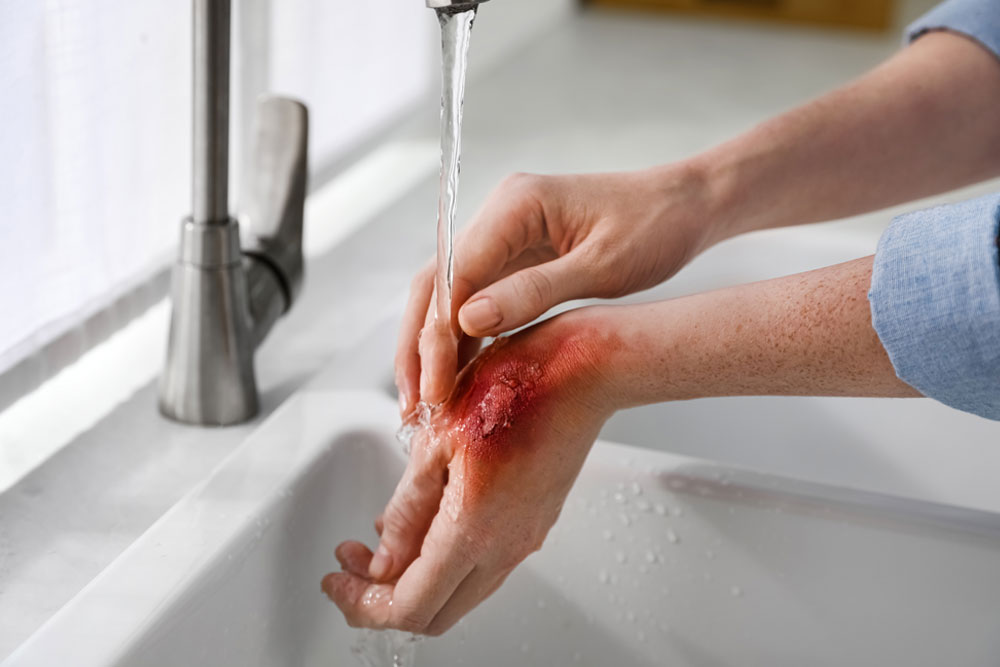
If you or someone you know gets a first-degree burn, do the following steps:
- Immediately put the burned area under cool (not icy) running water for 10-15 minutes. If running water is not available, place a cool wet compress on the area.
- After cooling the burn, apply a light moisturiser or aloe vera. Avoid heavier creams or ointments as they can trap heat and worsen the burn.
- Cover the burn with a dry, clean bandage.
- Use a mild liquid soap to wash the affected area each day.
- If there’s pain, you can use over-the-counter pain relievers like ibuprofen.
When to Seek Medical Attention
First-degree burns usually heal on their own within a few days, but see a doctor if the burn covers a large area, becomes more painful over time, or there are signs of an infection.
Second-Degree Burns
Second-degree burns cause redness, pain, blistering and swelling.
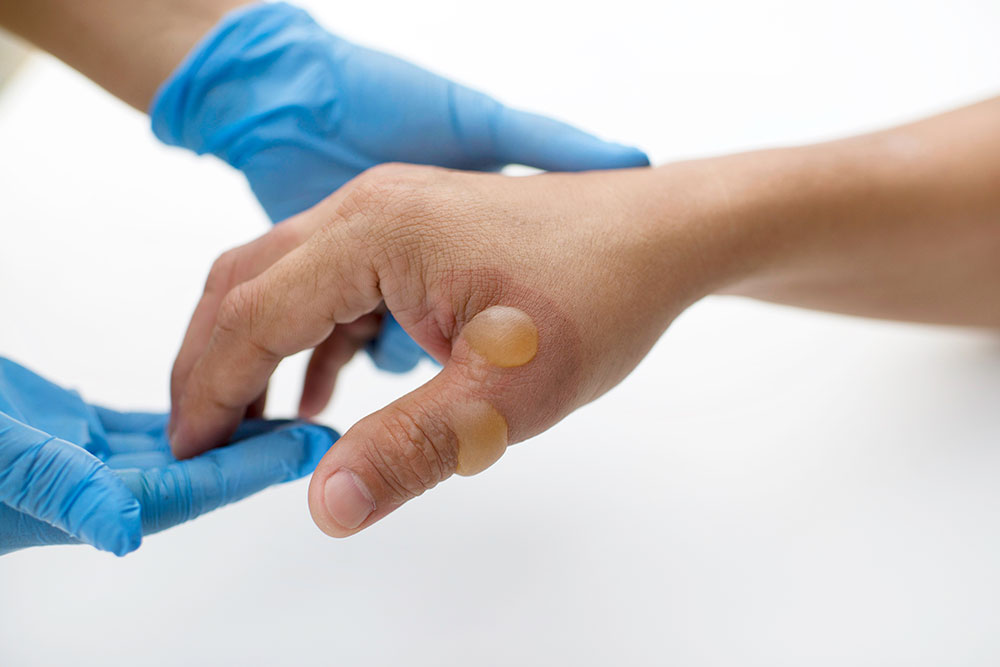
Here are the steps you should take to treat second degree burns:
- Like with first-degree burns, you should immerse the area immediately in cool running water for at least 10-15 minutes. The pain should take about half an hour to subside.
- Do not put grease, ointment, butter or powder on the burn. These substances might seem cooling, but they actually trap heat and prolong the damage. They can also increase infection risks.
- If blisters form, don’t pop them.
- If blisters are intact, do not bandage the burn. If they have broken open, cover the burn loosely with a dry, sterile and non-stick bandage.
- Replace the dressing whenever it becomes soiled.
- If the pain persists, use over-the-counter painkillers.
- Use a cooling burn gel or antibiotic ointment if advised by a healthcare provider to reduce infection risk and ease discomfort.
When to Seek Medical Attention
Second-degree burns are more serious than first-degree burns, so may need professional treatment. Seek out medical help if the burn covers a large area (over 2-3 inches) or is on a sensitive area like the face, hands or genitals.
You must also watch for signs of infection. If you see redness or feel weakness, contact your healthcare provider.
Third-Degree Burns
Third-degree burns are medical emergencies. If someone has a severe burn with skin that looks charred, black or white, call 999 right away or take the person immediately to A&E.
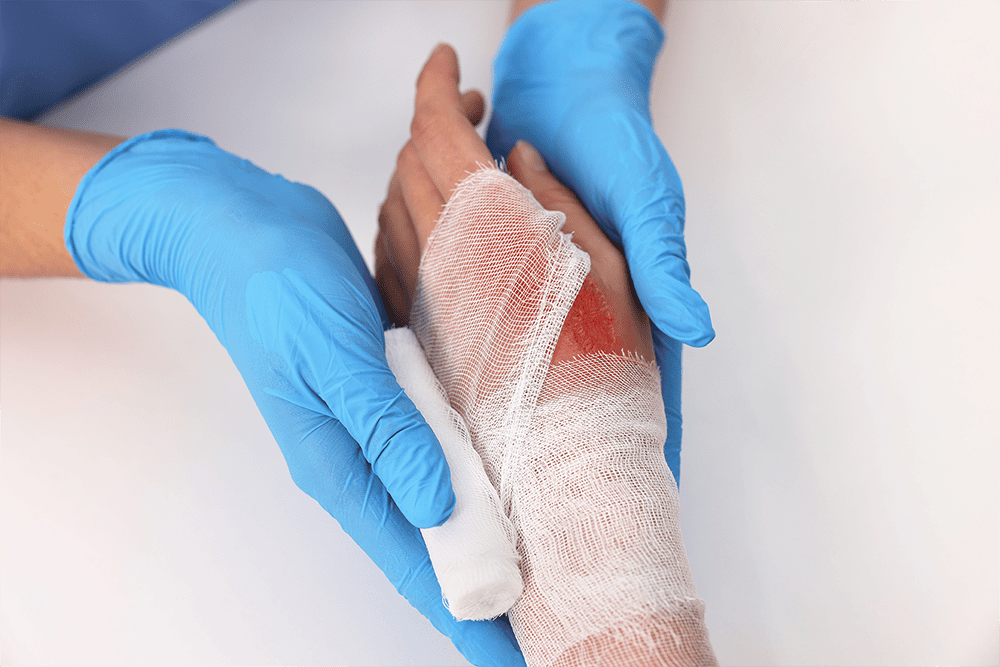
In the meantime, be sure to take these steps:
- Do not apply water to a third-degree burn.
- Attempt to remove clothing around the affected area but leave any items stuck to the burn.
- Do not apply ice, ointments or other substances.
- Cover the burn loosely with a dry sterile bandage or clean cloth to prevent infection.
- If possible, elevate the affected area (such as a burned limb) to reduce swelling, but do not move the person unless necessary for safety.
When to Seek Medical Attention
Third-degree burns require immediate professional help. Delaying it can result in complications such as infections and shock.
Special Considerations for Electrical & Chemical Burns
Treatment is generally based on the degree of burn, regardless of the cause. However, there are a few additional considerations for electrical and chemical burns.
Chemical Burns
- Some chemicals react with water. Before you flush the affected area with cool water, brush off dry chemicals.
- If possible, bring the chemical container with you when seeking treatment.
Electrical Burns
- Do not touch the casualty if they are still in contact with the electrical source.
- If trained, perform CPR if the person is unresponsive.
Appropriate Training
Burns can happen to anyone. Knowing how to treat burns correctly can prevent serious damage.
Our online First Aid Course at Work provides the essential skills needed to respond to burn injuries. You’ll learn how to assess the severity of burns, provide immediate first aid and recognise when to seek professional medical help.
The course ensures that you’re ready to act quickly and confidently in an emergency situation involving burns.
